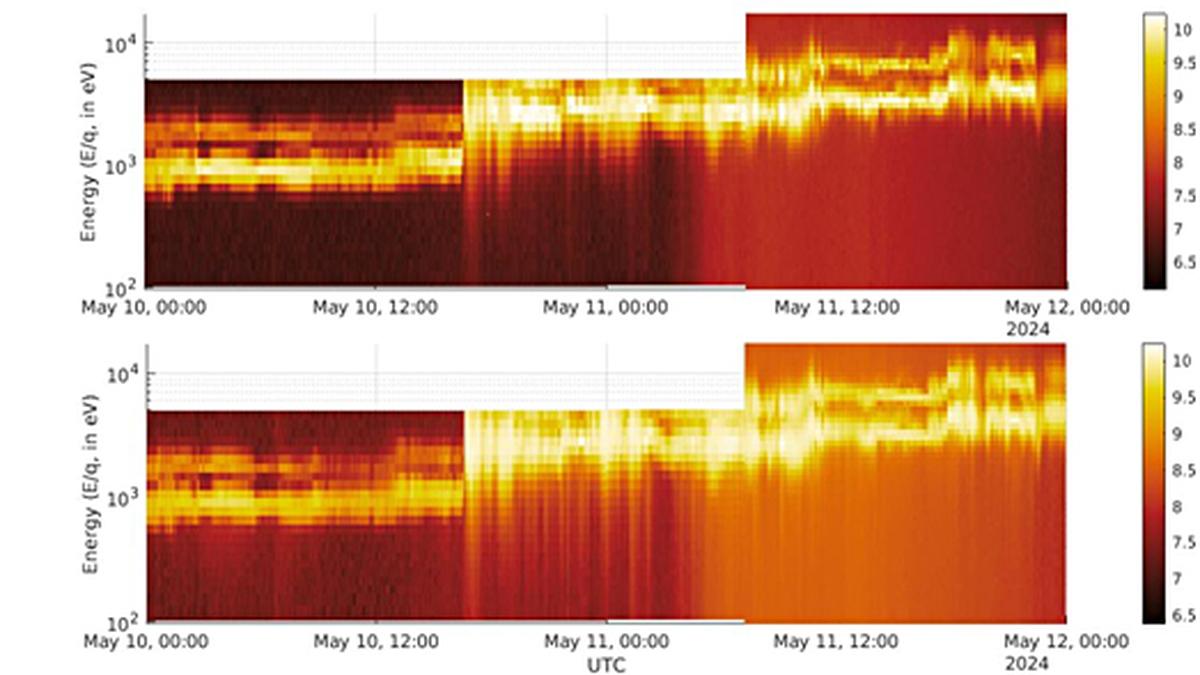
ISRO captures signatures of recent solar eruptive events
The Hindu
ISRO captures solar storm signatures, minimal impact on India, monitoring space weather, Chandrayaan-2 observations, no major satellite disruptions.
The Indian Space Research Organisation (ISRO) has captured the signatures of the recent solar eruptive events from Earth, Sun-Earth L1 Point, and the Moon.
A powerful solar storm impacted Earth earlier this month, triggered by the highly active region AR13664. This region unleashed a series of X-class flares and coronal mass ejections (CMEs) directed at Earth.
“This is the biggest Geomagnetic storm since 2003 in terms of its strength, as the flaring region on the Sun was as big as the historically important Carrington event that took place in 1859. Multiple X-class flares and CMEs have hit the Earth in the past few days. This had severe effects over high latitudes where trans-polar flights are already being reported to get diverted. More events are expected in the next few days,” ISRO said.
However the space agency said that the Indian sector got less affected as the main hit of the storm happened in the early morning of May 11, when the ionosphere was not developed fully.
“Also, being at lower latitudes, widespread outages haven’t been reported in India,” ISRO said.
ISRO said that the Global navigation satellite system network observations at the National Atmospheric Research Laboratory at Gadanki, Andhra Pradesh show decrease of the Total Electron Content (TEC) by more than 50% from May 10 midnight to May 11 morning.
“On 11 May daytime TEC was high by about 10% with large variations indicating disturbed ionosphere. In the evening TEC is nearly 30% more. No L band scintillation has been observed. Radar observations showed no bubble, consistent with TEC and scintillation observed by GNSS receivers,” ISRO said.











